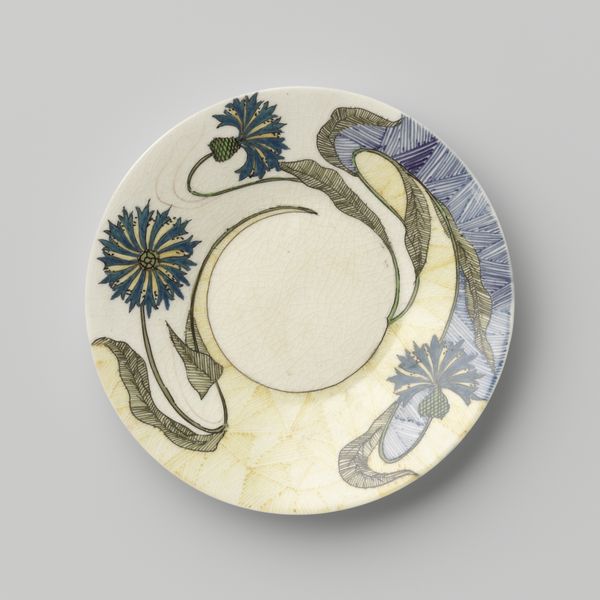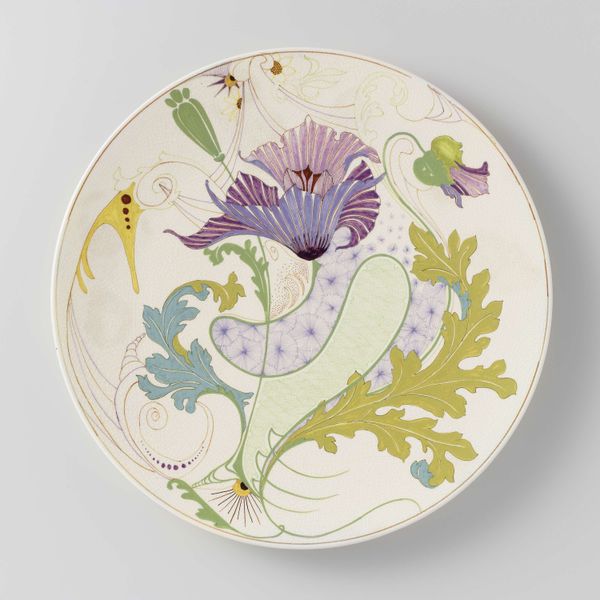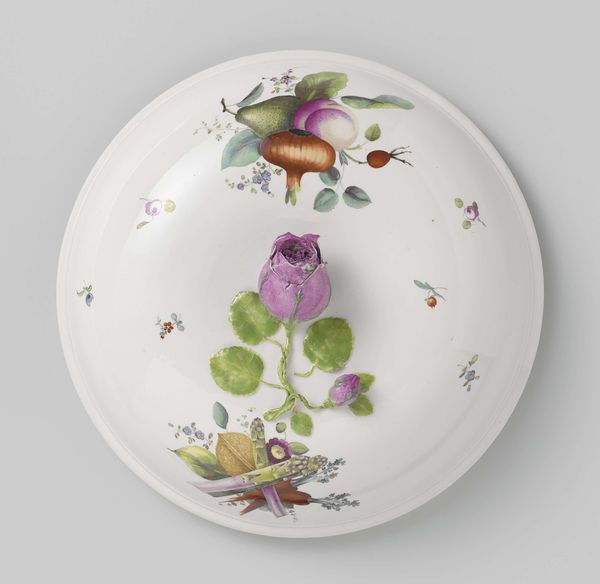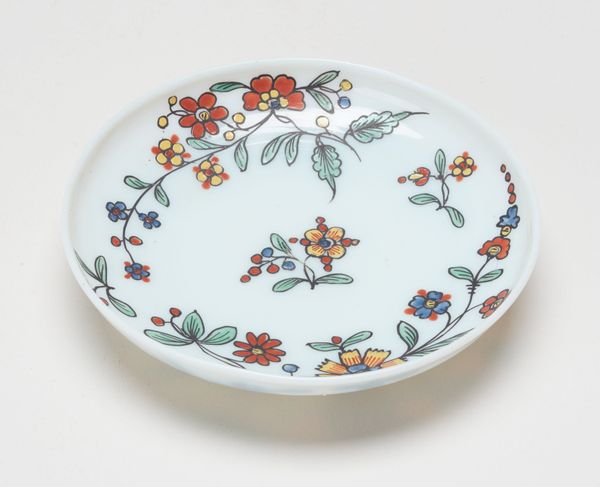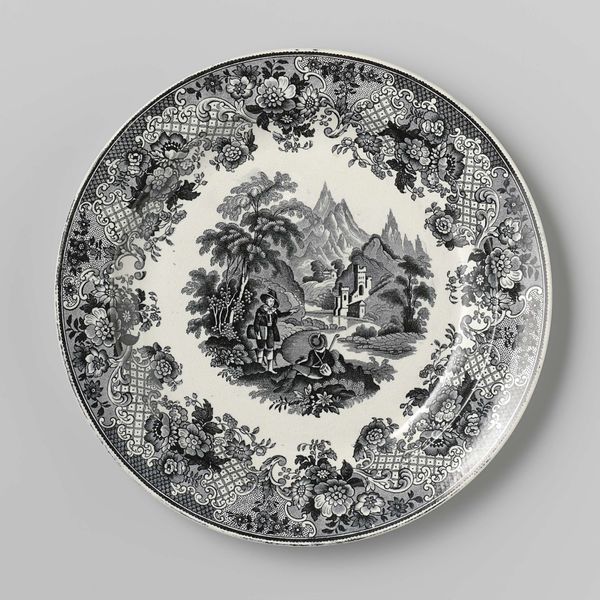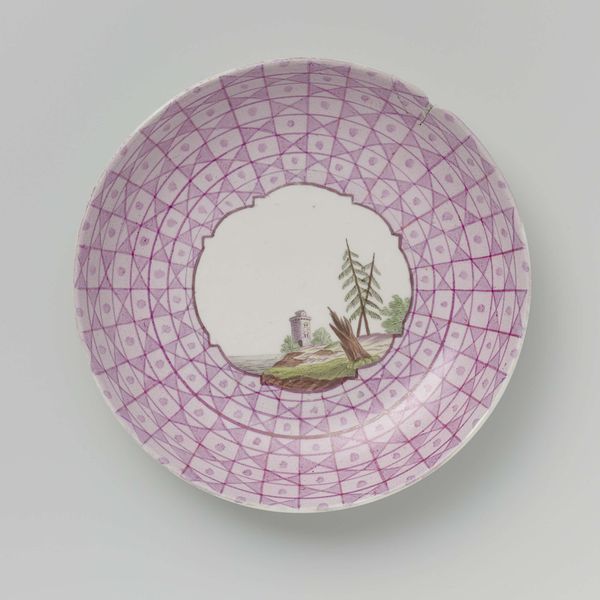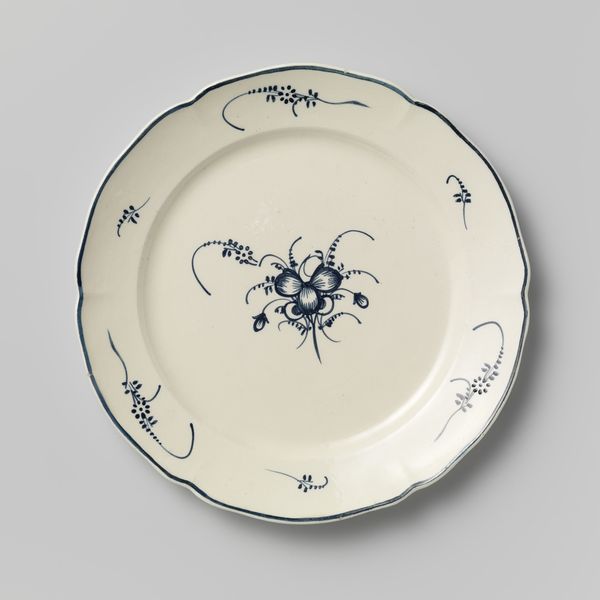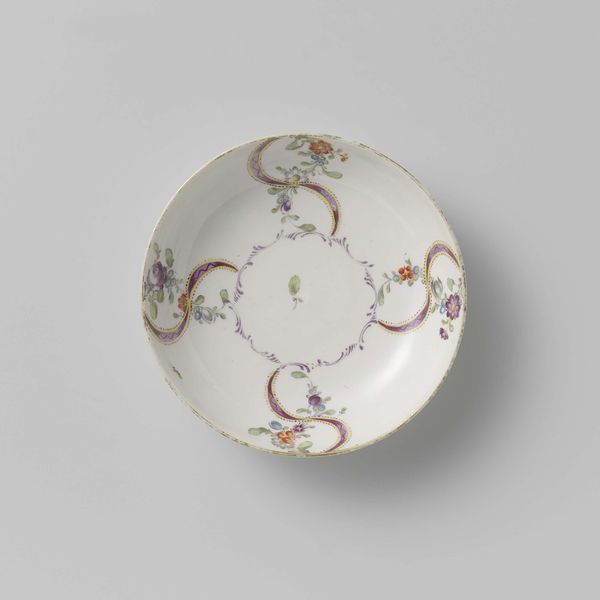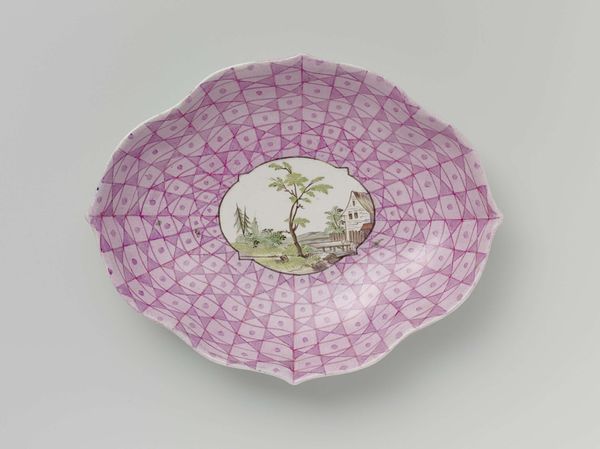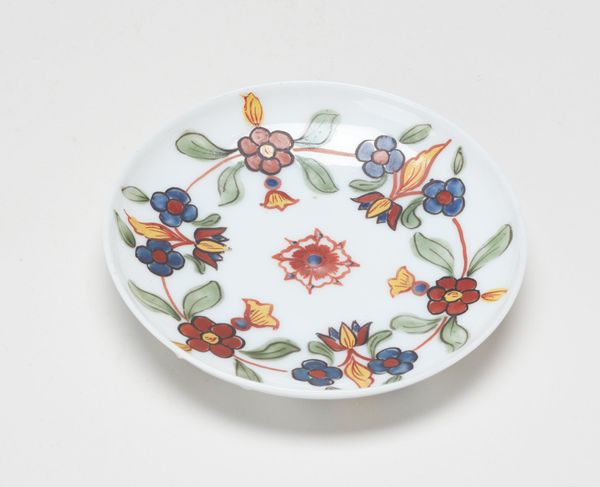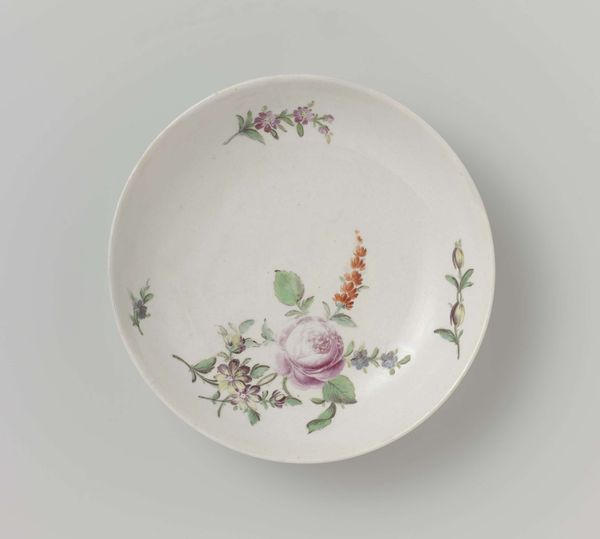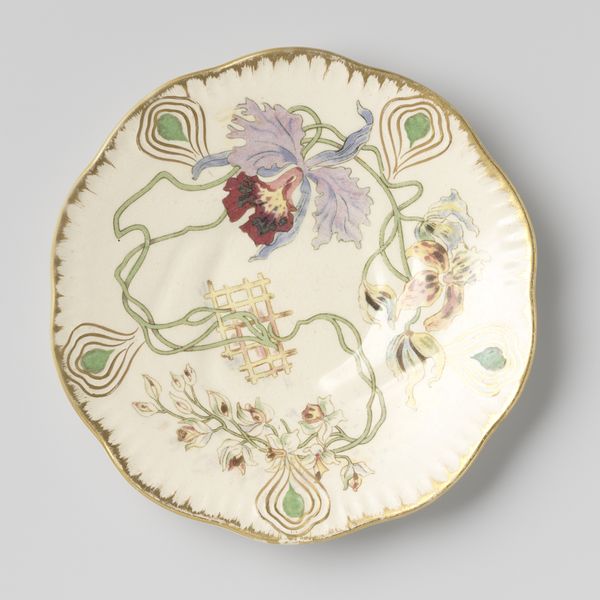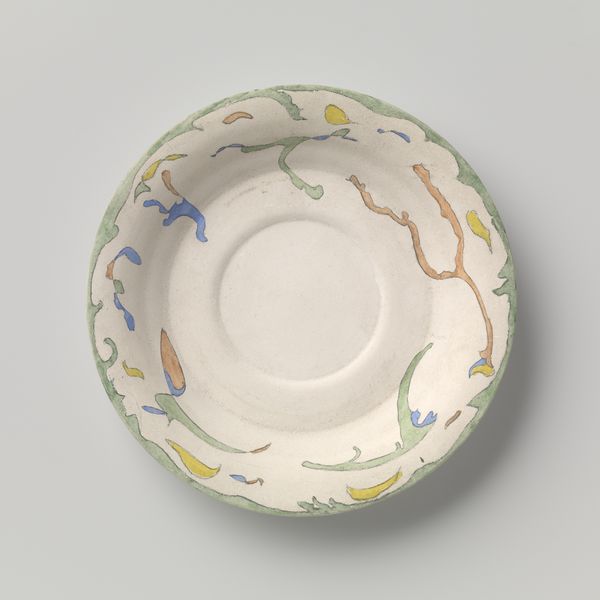
ceramic, watercolor
#
art-nouveau
#
ceramic
#
watercolor
#
watercolour illustration
#
decorative-art
Dimensions: height 0.9 cm, diameter 20.3 cm
Copyright: Rijks Museum: Open Domain
Curator: Oh, it feels so light, doesn't it? Like a summer garden viewed through a haze. Editor: Yes, that’s it exactly! A dreamy botanical fantasy. What are we actually looking at? Curator: This is a decorative plate from 1899, titled "Bord versierd met gestileerd bloem- en bladwerk"—A Plate Decorated with Stylized Flowers and Foliage. It comes to us from the N.V. Haagsche Plateelfabriek Rozenburg, and the materials are ceramic and watercolor. Editor: Rozenburg, you say? It has that characteristic swirling, almost chaotic Art Nouveau style. I find that chaos incredibly energizing here—those tendrils wrapping around what seems to be some sort of exotic bloom. Curator: The Rozenburg factory became particularly known for its refined application of the watercolor technique onto ceramics. Rozenburg was actually quite an influential player in the decorative arts during the Dutch Art Nouveau period, supplying wares to an international clientele. Think about how radically different that decorative philosophy was at the time - how a plate like this moved against academic traditions, offering more playful, ornamental works. Editor: So, in a sense, these botanical forms are a quiet act of rebellion? A very genteel revolution for your afternoon tea? Curator: Absolutely. They were interested in bringing art into the everyday, democratizing access to beauty. Before, that might have been a painting only the wealthy could afford. Now, a middle-class household could have objects decorated by talented designers in this very striking and modern style. Editor: The restraint is remarkable, though, too. Just a few colors, softly applied. Not shouting, more like whispering, "beauty can be found in the everyday." It almost reminds me of certain aspects of Japanese art of that era. What do you make of the choice of color, in a social sense? Curator: The color palette, primarily the pastel greens, blues and reds, aligns with Art Nouveau’s inclination towards muted and sophisticated tones, marking a shift from the bolder hues often associated with earlier decorative movements. I agree, there’s definitely a confluence of aesthetics here - the flattened perspective that can be observed in the Japanese Rinpa school for example - that Rozenburg cleverly used in its work. Editor: I will carry away today, perhaps, that beauty is found not just in grand museums but in the small moments and objects that shape our daily life. This unassuming ceramic plate echoes and mirrors more profound and larger shifts and influences. Curator: Yes, I'd agree completely. It gives us a tiny view of the changing role and public place for art as we entered the 20th century.
Comments
No comments
Be the first to comment and join the conversation on the ultimate creative platform.
